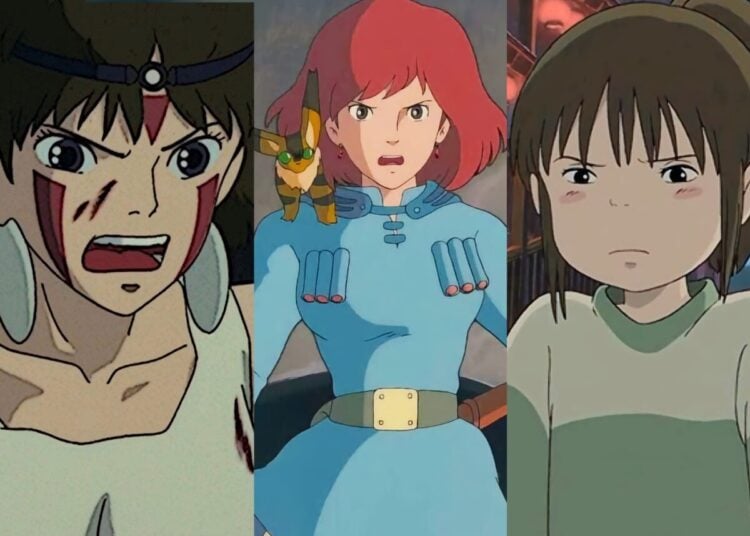When you spend many hours focusing on something, whether it’s building a model train set or learning a foreign language, it’s natural to get a little obsessive over it. I’ve known many gaijin students of Japanese who had favorite kanji characters that they especially liked to write, a slogan or poem or proverb they were fond of, and so on. One Japanese word I myself like is setsunai (set-tsoo-NAI), translatable as painful, lonely, wistful, or heartrending. It describes the deliciously bittersweet blending of sorrow and happiness that’s quite common in many Japanese stories. Enka, the traditional music of Japan that’s similar to American Country music in some ways, often deals with such tear-jerking themes as crossing the Tsugaru Straits between Honshu to Hokkaido in the ferry to search for your lost love, longing to return to one’s furusato (hometown), etc. Artistically beautiful stories of sorrow can be found in anime, too, like the melodramatic tales of Leiji Matsumoto (Space Cruiser Yamato or Galaxy Express 999), and of course the classic A Dog of Flanders. Another anime that uses setsunai emotions to tell a great tale is Maison Ikkoku, the story of university ronin Godai’s long battle to win the love of Kyoko Otonashi, whose husband Soichiro died leaving a hole in her heart. When Godai finally finishes college and finds a job, he’s finally able to propose to Kyoko…

Godai: “Please marry me. I’ll never do anything to make you cry. Give the remainder of your life…to me.”
Kyoko (after an agonizingly long pause): “Make me one promise. Please…even if it’s just for one day…live longer than me. I could never be alone like that again.”
(Peter reminds himself to write that “Everything I needed to know about Japan I learned from watching Maison Ikkoku” post…)
You’d think after living in Japan for fifteen years, I’d be pretty immune to culture shock. But when I went with my daughters Girl Scout troop on their annual barbecue yesterday, I had more than my share of surprises. Besides the usual types of meat or sausages, a “barbecue” in Japan can include bean sprouts, eggplant, cabbage, yakisoba noodles and even seafood like scallops. While we were doing the cooking, I was mortified to see the other mothers pull out a bag of squid and plunk the contents down on the grill next to the beef we were grilling, so that the juices ran together — as an added bonus, there was a sardine that had apparently been in the squid’s stomach, that they also grilled that too. Not exactly your average American BBQ experience. Then it was time for S’Mores, or as they call them in Japan, Some Mores, for reasons of simplicity. These were S’Mores with a cultural twist: since there are no graham crackers to be found in Japan, we made them with Saltines. In addition to the standard white marshmallows, one of the mothers had brought along…coffee flavored marshmallows! It all went very well with the dark chocolate they had prepared.
You often hear about Japan being a place divided into in-groups (uchi) and out-groups (soto), and foreigners here generally have the image of not really being accepted into society — the term gaijin literally means “outsider” after all. I often wonder if this is really true, though. My own theory is that language determines about 70% of how we interact with others, and if the average person could converse in his own language naturally with someone from another culture, he’d generally treat the person as he would want to be treated. I certainly didn’t feel like an outsider as I talked with the other mothers in Girl Scouts about our kids, and a friend of my son’s spent several years in the States and speaks English perfectly, making him just like any other American boy even though he’s Japanese. Our city is quite an international one, with 3% of the registered population being foreigners from Brazil and Peru, working in factories or in construction and providing many valuable services in the community, since they’re willing to do the so-called “three K” jobs that are kitsui, kitanai, and kiken, meaning hard, dirty and dangerous. There are so many children from South America here that our city has a special elementary school for them where they can learn in Portuguese and Spanish. I’m sure that it seemed like a good idea to teach the children of foreigners working here in their native languages, but to my mind it’s a very bad thing: it erects barriers between the local Japanese and the kids from other countries and keeps them from getting to know each other. A much better approach would be to teach all kids in Japanese (this being Japan and all), including kanji, with special classes available to kids that need the extra help in their native languages.
J-List carries dozens of great original T-shirts and hoodies, which feature wacky or aesthetically beautiful Japanese messages, and cute original anime designs, too, like Totoro and Cat Bus. We’ve received word that the Carolina Blue hoodies we print the Cheshire Totoro designs has been discontinued by the manufacturer. This is just a heads up — if you like the look of this warm, soft hooded sweatshirt, you might want to pick one up before your size is gone.















